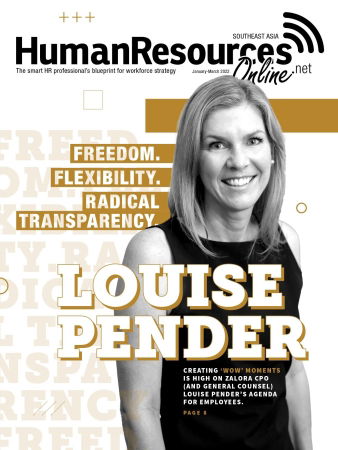share on
The scope and timeframe are made very clear as there is less interaction among teammates expected further down the line without the need to physically be at the office, affirms Fabi Cariño, Country Head, HR - Philippines, dentsu Philippines, in conversation with Arina Sofiah.
Like most employers, the pre-pandemic setup for integrated marketing solutions agency dentsu Philippines was fairly traditional, Fabi Cariño, Country Head, Human Resources - Philippines, admits; think biometric logins, desktop workstations, and a nine-to-five office routine.
However, with the worst of the pandemic behind us, dentsu has now moved to a hybrid working arrangement, whereby employees can come into the office once a week by reserving a seat. They can choose which day works best for them, and the office now sees typically between 30-50% capacity as compared to the 100% in the pre-COVID era. Even the biometric entry-exit system of monitoring employees’ time has given way to more trust and empowerment.
Now, dentsu relies on results instead. The team ensures all objectives communicated at the beginning are met. The scope and timeframe are made very clear as there is less interaction among teammates expected further down the line without the need to physically be at the office.
One of the greatest challenges in any change management activity, Cariño notes, is mindset, and in creating a post-pandemic workplace, this was the first step she addressed as well. As HR head, she brought together representatives from each department to represent the voice of the whole department in any new policies and procedures created.
Secondly, she highlights leaders have to be clear on what they want, especially with so many hybrid models out there. Cariño cautions against a one-size-fits-policy, so simply emulating what the Singapore office is doing, for instance, was not good enough – instead, it’s about being clear on what the Philippines team wanted.
To do so, she conducted a survey and rolled out assessment tools to ensure that everyone, beyond the nominated departmental representatives, could share how they felt about the change and give suggestions on the physical setup of the office, the office timing, the overtime considerations, and more. It was important to be open to all the possibilities in order to ensure an ideal and robust set up, Cariño points out.
Having taking into account considerations for a change initiative, what then are the factors of concern specific to a four-day workweek? Efficiency is one, says Cariño, so there is no sacrifice in the quality of work. As such, Fabi understands why there is so much debate around the idea.
“Many people are used to rationalising productivity with the number of hours at work, when this is, in fact, not true. The old paradigm needs to be changed; productivity does not connote the number of hours at work. Rather, productivity is based on results – the output, the effort that you put in, and the prioritisation of tasks,” she highlights.
In moving to a shorter workweek, this HR leader believes change starts with the objective in mind. Employers need to be able to see the long-term benefits of a shorter week – be it through improved work-life balance, mental wellbeing, and efficiency, without impacting the quality and quantity of work that gets done. It would also help to invest in platforms, technologies, and better systems for staff to work efficiently.
Equally importantly, employers should work hand-in-hand with employees to ensure they feel psychologically safe, in terms of evolving to become more self-reliant without as much supervision or micromanagement that some may have been used to.
With all these considerations, Cariño does see the four-day workweek becoming a reality in the future, with some government offices in the Philippines already piloting it. “We learn from the triumphs and successes, and also from the mistakes."
Piloting is often the least-risk way to kick off a new project, and Cariño is open to trialling the idea at dentsu for one to three months. Through a trial, she would accurately be able to measure the impact on employees and their productivity; thus, leaders can view the idea based on facts instead of perception.
“As a leader, I would like to see the early results. I also want to see the return on investment on my employees. Facts and figures are the only way to measure effectiveness."
This, she says, is especially important since a lot of companies were previously afraid to try it, but are now willing to step out from their comfort zone to give it a shot. Early wins through pilots also help to debunk possible misconceptions surrounding the shorter workweek, such as the need for adjusting employee salaries, impact on productivity, and slow engagement post a long weekend.
To end the conversation, Cariño reiterates that a paradigm shift is necessary to ensure successful change. Both leaders & managers as well as employees need to be educated. The premise should be based on facts and figures instead of mere perception, she affirms.
An excerpt of this article first appeared in the Q1 edition of Human Resources Online's Southeast Asia e-magazine. View a copy of the e-magazine here, where you'll find power-packed features and interviews with leaders from Singapore, Indonesia, Thailand, the Philippines, the US, and more!
Image / Provided
Follow us on Telegram and on Instagram @humanresourcesonline for all the latest HR and manpower news from around the region!
share on



